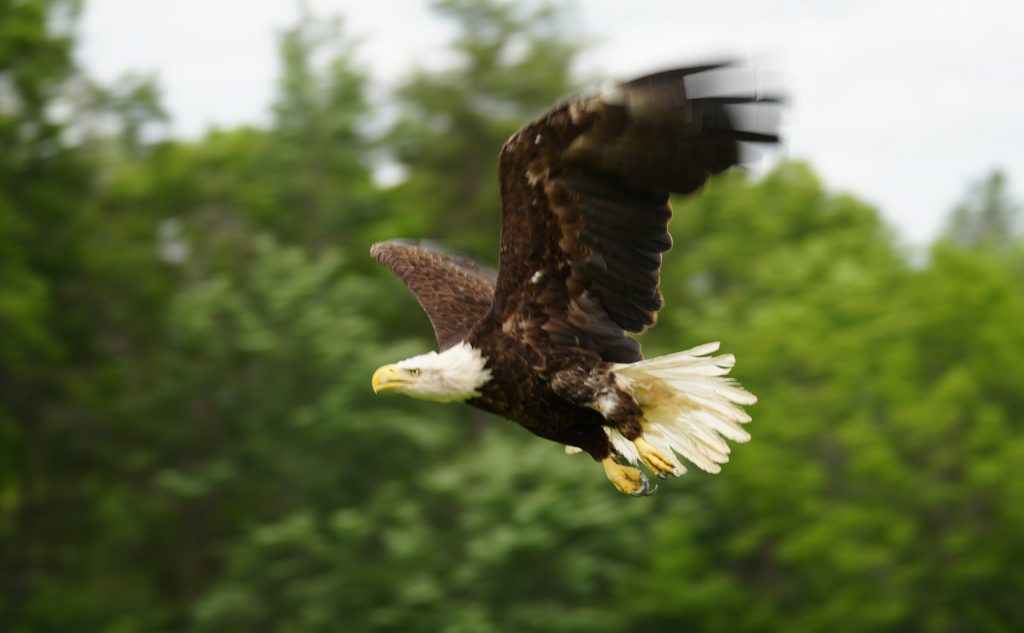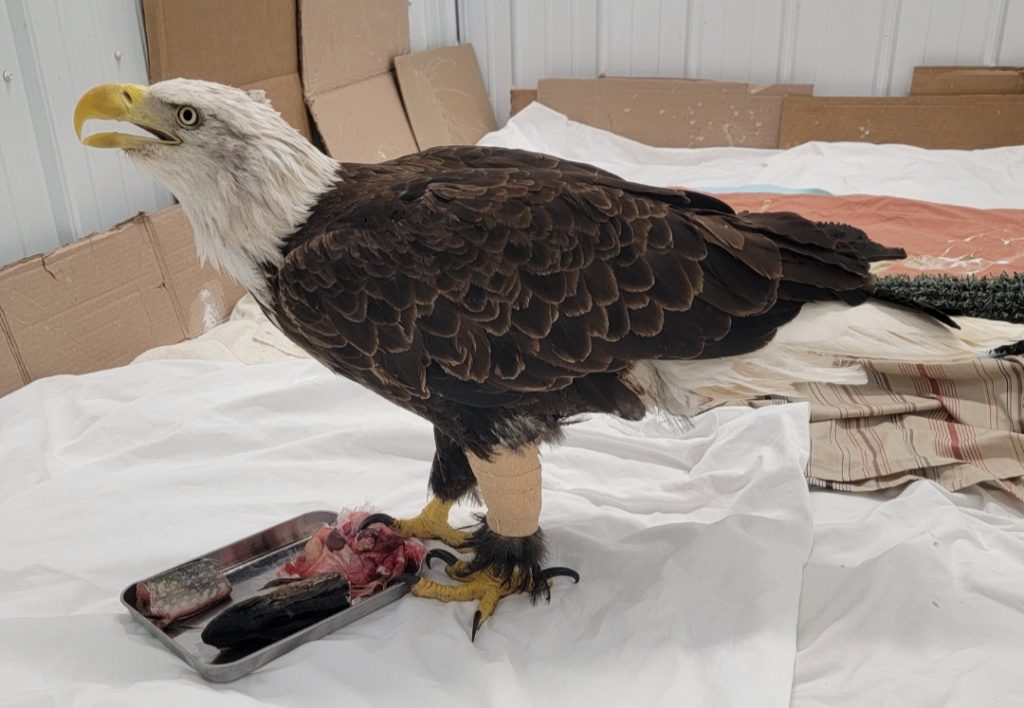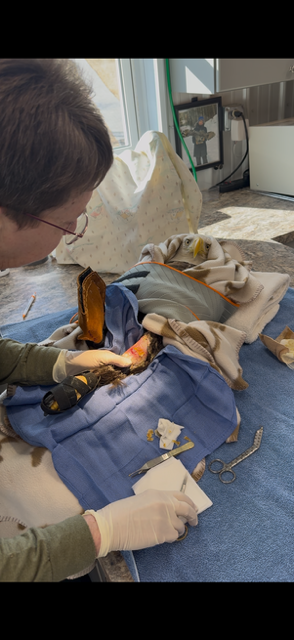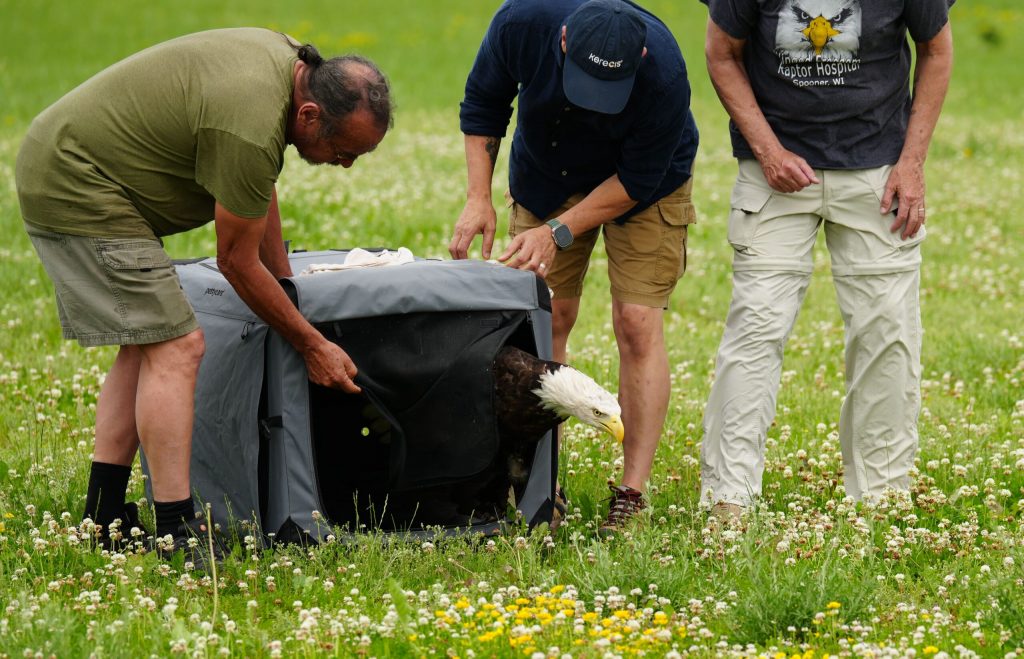Wisconsin Bald Eagle Saved by Unique Treatment
Eagle that nearly died is first to get a skin graft derived from North Atlantic cod.

After nearly a year of treatment and rehabilitation, the eagle Kere was released. Photo courtesy of Winged Freedom Raptor Hospital
A bald eagle that nearly died from a leg injury took flight this summer in northwestern Wisconsin, after it was rehabilitated for nearly a year using a first-of-its-kind cod fish skin graft treatment primarily used in humans.
Ammann said the eagle was brought to the volunteer-run center in September 2024 after it was found at a campground with a gaping injury on its leg.
“It was horrible,” said Ammann, founder of the hospital. “It had been open and exposed to air and bugs and bacteria … at least a week, if not longer.”
“She was dying,” Ammann added.
The veterinarian takes in about 200 birds a year, including at least 75 bald eagles.
She knew this wound would be difficult to treat without any remaining skin near the injury to work with. So Ammann began Googling alternative ways to close the wound. She found the Iceland-based company Kerecis, which makes tissue regeneration products from fish skin.

Kim Ammann treated the eagle Kere’s wound with a fish skin graft. Photo courtesy of Winged Freedom Raptor Hospital
“She (Ammann) was looking for a solution that would help her save the bird’s life,” said Marta Hines, Kerecis’s veterinary business development manager. “We had never applied fish skin to an eagle.”
After hearing the eagle’s story, the company provided its product to Ammann’s center for free. Ammann named the eagle “Kere,” a nod to the company’s name.
Kerecis products are made from North Atlantic cod skin, selected for its compatibility with human skin and because it has no known risk of viral transmission, Hines said. The production is also sustainable, she added.
“We are able to work with something that would have been discarded and wasted,” Hines said. “And put it to work and to help save lives, close wounds.”

Veterinarian Kim Ammann healed eagle Kere’s wound with a fish skin treatment from the Iceland-based company Kerecis. Photo courtesy of Winged Freedom Raptor Hospital
Ammann rehydrated and sutured Kerecis’ veterinary-friendly fish skin patch onto Kere, a fish-eating bird. The product looks almost like a fishnet stocking, she said, and creates a structure for tissue to regenerate around.
“It brings all the nutrients and structure in for her own skin cells to then creep in,” Ammann said.
After 10 months of wound treatments and, later, rehabilitation in the center’s open air eagle flyway, Kere was ready to be released, Ammann said.
On June 22, Kere took flight on a soccer field at a school near the center.
“She came right over my head,” Ammann said. “It was (a) mixed blessing for me. I was very fond of her. She was so tolerant of everything that we had done.”
Dozens of supporters looked on.
Ammann said she’s continued to use the fish skin treatment for small injuries on other birds.
A Wisconsin bald eagle nearly died. A skin graft from a fish saved its life. was originally published by Wisconsin Public Radio.
If you think stories like this are important, become a member of Urban Milwaukee and help support real, independent journalism. Plus you get some cool added benefits.



















